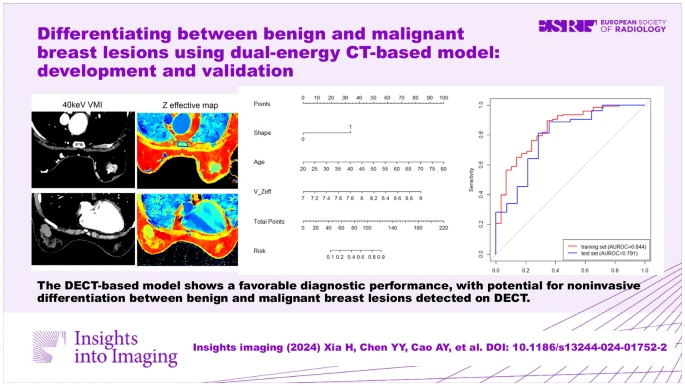Combined hepatocellular carcinoma-cholangiocarcinoma (cHCC-CCA) is a rare and complex subtype of primary liver cancer (PLC), characterised by the presence of both hepatocytic and biliary components. Its incidence ranges from 0.4% to 14.2% among PLCs, and its prognosis and treatment have been contentious due to its rarity and histologic heterogeneity. Identifying prognostic factors for cHCC-CCA is crucial for improving patient management and treatment outcomes. One such factor, microvascular invasion (MVI), has been shown to significantly impact prognosis. This recent study in Insights into Imaging explores the potential of MRI-based radiomics for predicting MVI in cHCC-CCA, thereby aiding clinical decision-making and individualising patient care.

Understanding Microvascular Invasion (MVI) and Its Significance
MVI is recognised as a critical prognostic factor in several tumours, including cHCC-CCA. It refers to the presence of tumour cells within the microvascular structures, detectable only under a microscope. MVI's association with poor prognosis in cHCC-CCA has been established through various studies, underscoring the importance of its preoperative prediction. Conventional imaging features and clinical biomarkers, such as the Liver Imaging Reporting and Data System (LI-RADS) categorisation, arterial peritumoral enhancement, and serum AFP levels, have been identified as predictors of MVI. However, these methods often suffer from low sensitivity and inconsistent interobserver reliability, highlighting the need for more robust predictive tools.
The Role of Radiomics in Predicting MVI
Radiomics, a field that extracts quantitative data from medical images, offers a noninvasive method to identify markers that can guide clinical decisions. By analysing features invisible to the naked eye, radiomics has the potential to enhance the prediction of MVI in cHCC-CCA. Previous research has shown a correlation between radiomics features and specific biological portraits, suggesting that radiomics could reveal underlying tumour biology. A study aimed at establishing a robust MRI-based radiomics model for predicting MVI in cHCC-CCA involved 158 patients, of which 118 met the criteria for inclusion in the training and validation sets. This study utilised advanced imaging techniques and rigorous data analysis to develop a model with significant predictive power.
Constructing and Validating the Radiomics Model
The radiomics model was constructed using MRI data from patients who underwent surgical resection. Experienced radiologists analysed the images, and features were extracted using advanced software. The study involved segmenting tumours on various MRI sequences and evaluating features such as enhancement patterns, washout patterns, and diffusion status. The extracted radiomic features were normalised and used to build the prediction model. The model's performance was validated in multiple sets, demonstrating high accuracy in predicting MVI status. The radiomics model showed superior predictive performance compared to conventional clinical imaging models, indicating its potential as a reliable tool for preoperative assessment.
Implications and Future Directions
The study's findings have significant implications for the management of cHCC-CCA. The ability to accurately predict MVI status preoperatively can inform surgical planning and postoperative care, potentially improving patient outcomes. Furthermore, the radiomics model's correlation with biological processes, particularly those related to the immune response, opens avenues for personalised treatment strategies. Understanding the tumour's immune microenvironment can guide immunotherapy approaches, offering new hope for patients with cHCC-CCA. Despite its promise, the study also highlights the need for further research, including larger, multicentre studies and more comprehensive biological analyses, to validate and refine the radiomics approach.
The development of an MRI-based radiomics model represents a significant advancement in the noninvasive prediction of MVI in cHCC-CCA. This model not only demonstrates high diagnostic accuracy but also provides insights into the biological processes underlying tumour behaviour. By facilitating early and precise risk stratification, the radiomics model has the potential to revolutionise the clinical management of cHCC-CCA, paving the way for more effective, individualised treatment strategies. Future research should focus on enhancing the model's robustness and exploring its broader clinical applications, ultimately improving outcomes for patients with this challenging form of liver cancer.
Source: Insights into Imaging
Image Credit: iStock






